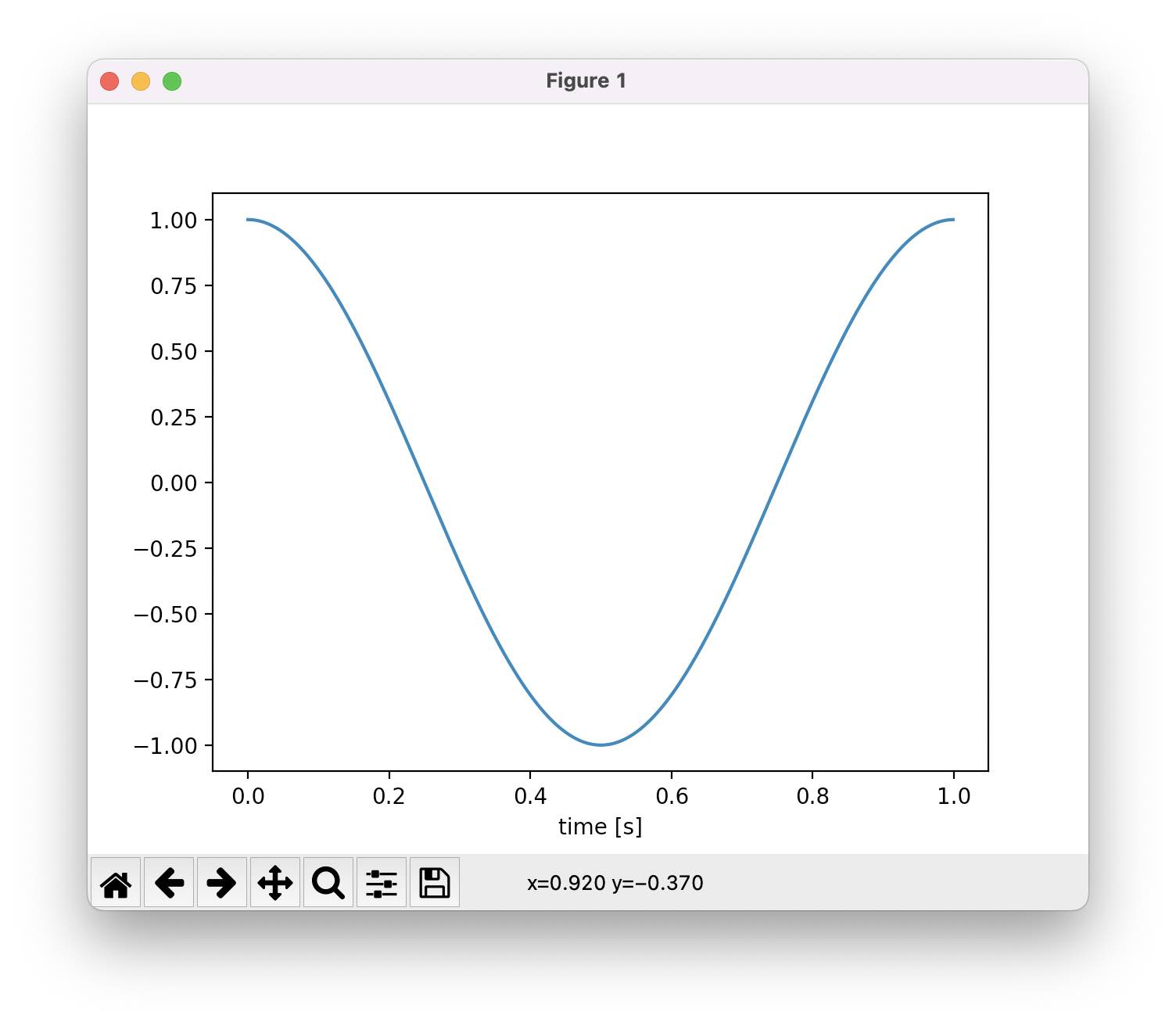Calling a C function from Python#
This tutorial shows how to create a C function and call it from Python. This case arises when we want to analyse the output of a C function using python modules such as Numpy or Matplotlib for rapid prototyping. For example, this approach can help you to debug low-level signal processing algorithms implemented in C.
In this tutorial, I consider a simple case where we want to compute the cosine value for each element of a Numpy array.
Note that this computation can be performed using the Numpy function cos directly, but for the sake of illustration, we will implement
this function in pure C.
Implement your C function#
First, we need to create a my_lib.c file with a single function called my_cos. The
my_cos function contains a for loop function that computes the cosine value for each element of the input array *in_array.
#include <math.h>
void my_cos(double *in_array, double *out_array, int size){
int i;
for(i=0; i<size; i++){
out_array[i] = cos(in_array[i]);
}
}
After saving the file my_lib.c, we need to create a shared library by running the following command in your terminal.
$ gcc -fPIC -shared my_lib.c -o my_lib.so
This command creates a file called my_lib.so
Call your function#
To call our function, we need to create a python script called show_sine.py.
Specifically, this script:
imports the C library / function using the module
ctypes,creates an instantaneous phase vector
phase,calls the C function
my_costo compute the cosine for each element of this vector,plots the output array using
matplotlib.
import ctypes
import numpy as np
from numpy.ctypeslib import ndpointer
import matplotlib.pyplot as plt
# import C function
lib = ctypes.cdll.LoadLibrary("./my_lib.so")
my_cos = lib.my_cos
my_cos.restype = None
my_cos.argtypes = [ndpointer(ctypes.c_double, flags="C_CONTIGUOUS"),
ndpointer(ctypes.c_double, flags="C_CONTIGUOUS"),
ctypes.c_size_t]
# create a nd array
Fe = 1000
t = np.arange(0, 1, 1/Fe)
phase = 2*np.pi*t
# allocate arguments and call the C function
N = len(t)
out_data = np.zeros(N)
my_cos(phase, out_data, N)
# plot the result
plt.plot(t, out_data)
plt.xlabel("time [s]")
plt.show()
Finally, we can run our python script using the following command.
$ python show_sine.py
